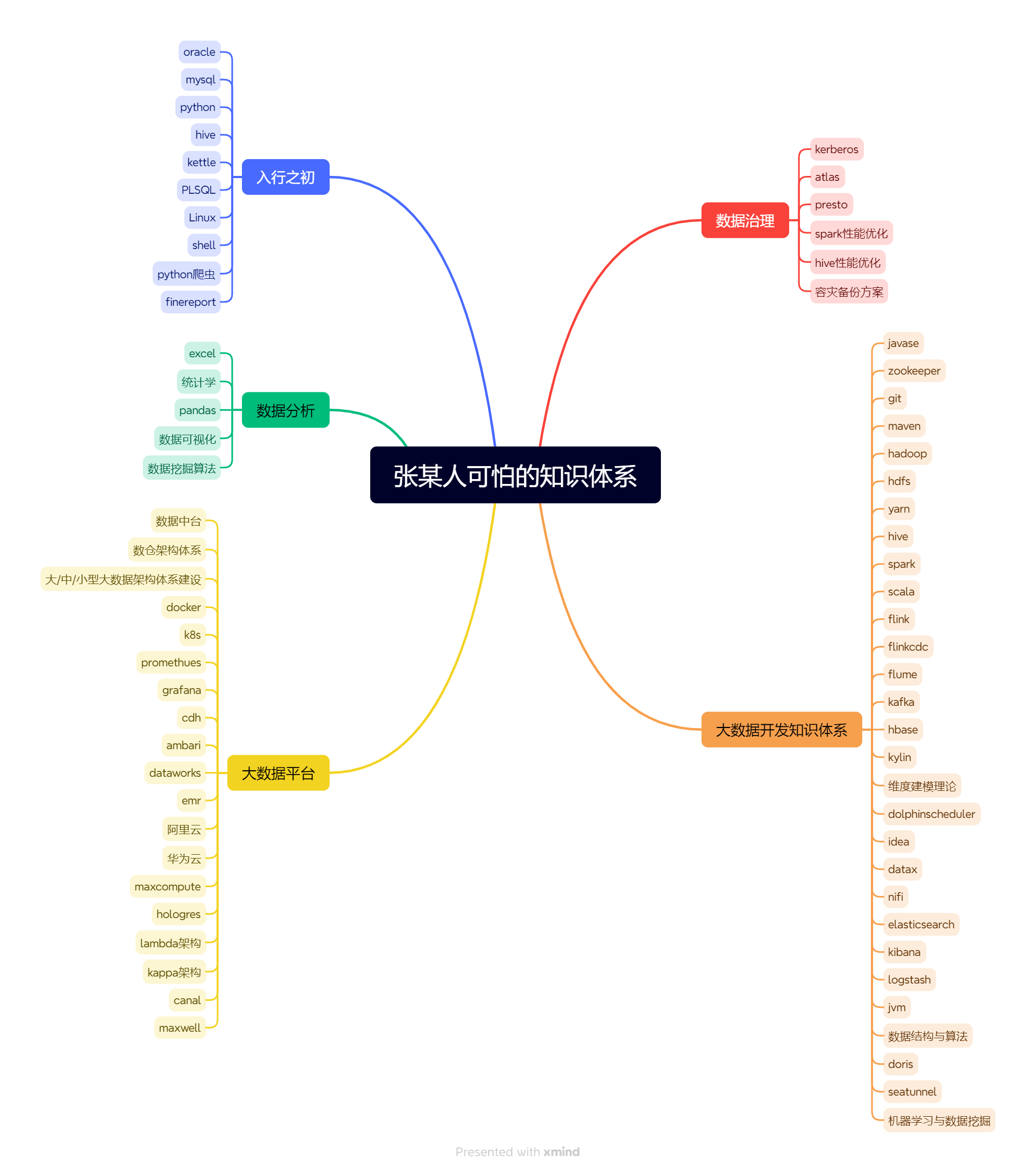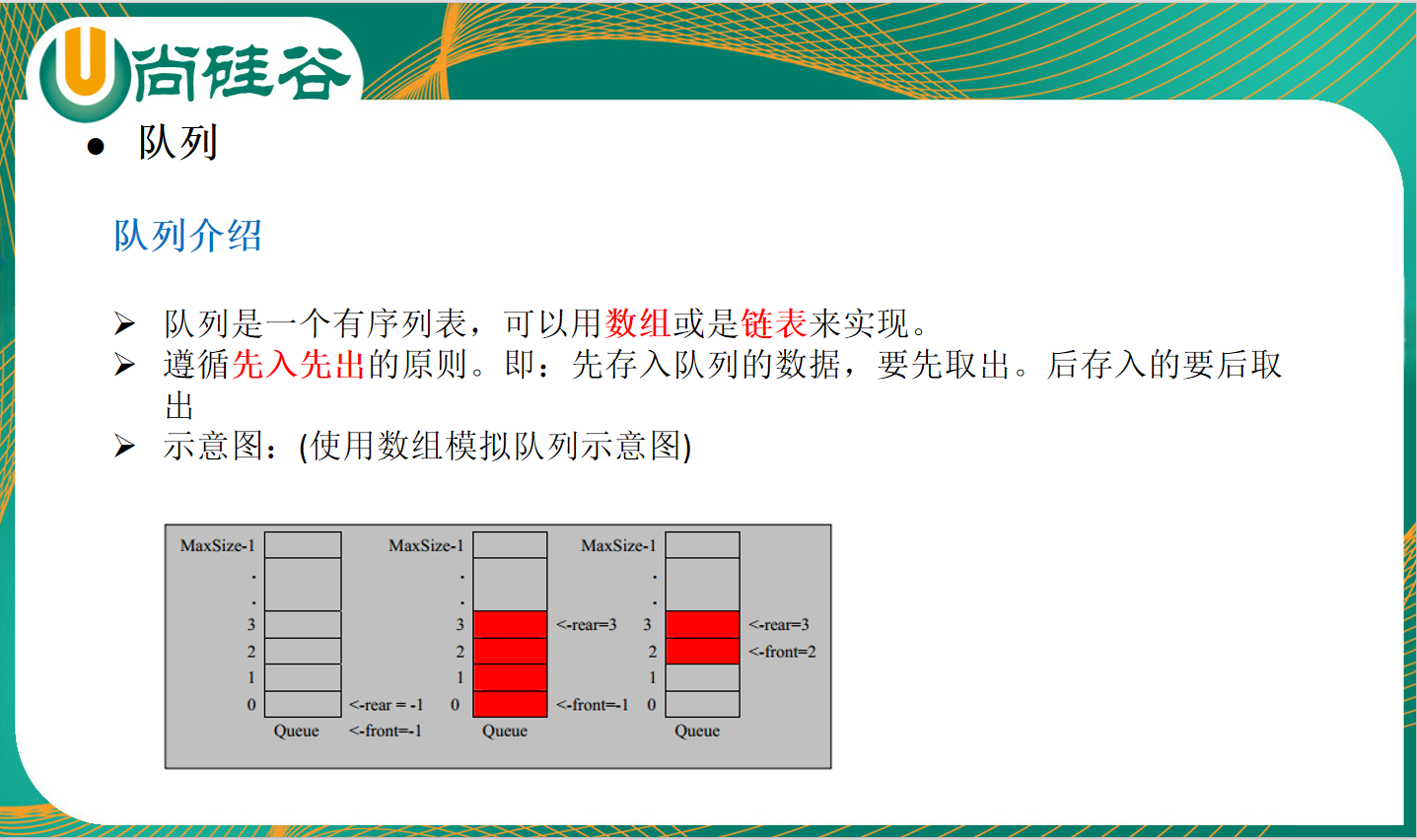推荐学习资料 – 【尚硅谷】数据结构与算法(Java数据结构与算法)_哔哩哔哩_bilibili
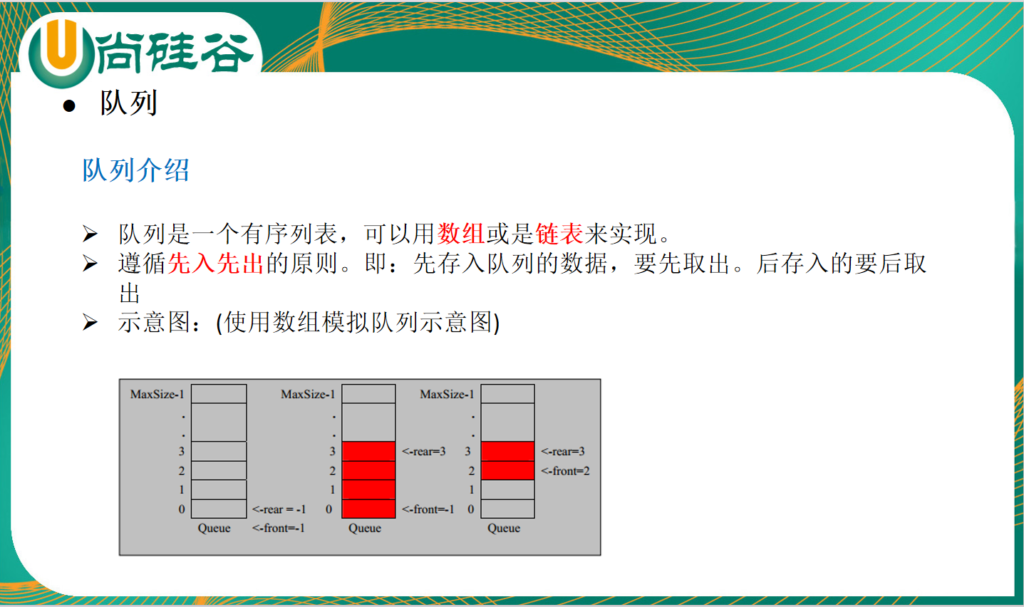
使用数组模拟队列
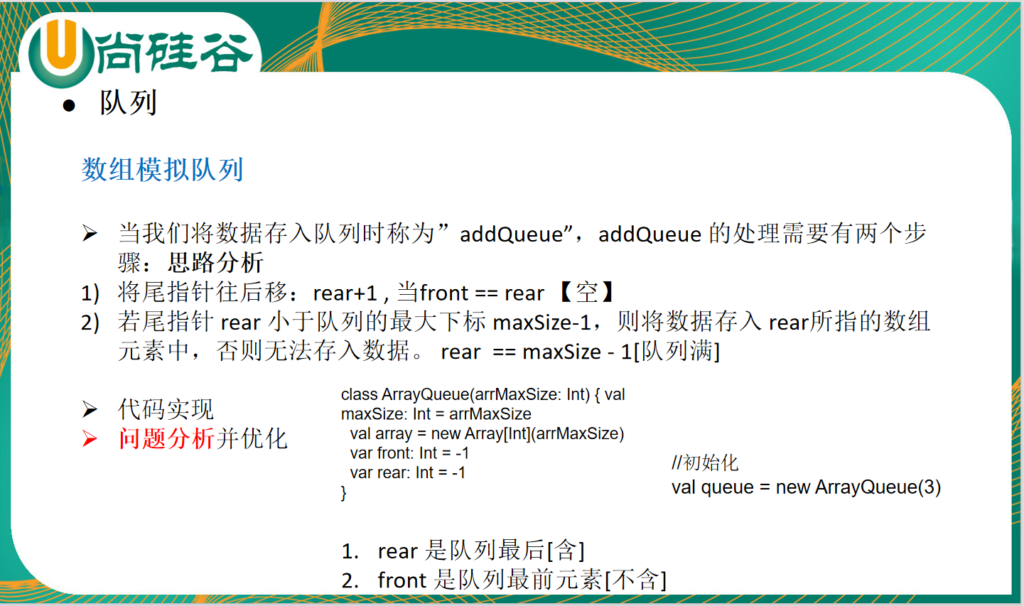
package com.zyy.queue;
import java.util.Scanner;
public class ArrayQueueDemo {
public static void main(String[] args) {
//测试一把
//创建一个队列
ArrayQueue queue = new ArrayQueue(3);
char key = ' '; //接收用户输入
Scanner scanner = new Scanner(System.in);
boolean loop = true;
//输出一个菜单
while(loop){
System.out.println("s(show):显示队列");
System.out.println("e(exit):退出程序");
System.out.println("a(add):添加数据到队列");
System.out.println("g(get):从队列取出数据");
System.out.println("h(head):查看队列头的数据");
key = scanner.next().charAt(0); //接收一个字符
switch (key){
case 's' :
queue.showQueue();
break;
case 'a':
System.out.println("请输入一个数");
int value = scanner.nextInt();
queue.addQueue(value);
break;
case 'g':
try{
int res = queue.getQueue();
System.out.printf("取出的数据是%d\n",res);
}catch (Exception e){
//TODO: handle exception
System.out.println(e.getMessage());
}
break;
case 'h':
try {
int res = queue.headQueue();
System.out.printf("队列头的数据是%d\n", res);
}catch (Exception e){
// TODO : handle exception
System.out.println(e.getMessage());
}
break;
case 'e': // 退出
scanner.close();
loop = false;
break;
default:
break;
}
}
System.out.println("程序退出~~");
}
}
// 使用数组模拟队列 - 编写一个ArrayQueue类
class ArrayQueue{
private int maxSize; // 表示数组的最大容量
private int front; // 队列头
private int rear; // 队列尾
private int[] arr; // 该数据用于存放数据,模拟队列
//创建队列的构造器
public ArrayQueue(int arrMaxSize){
maxSize = arrMaxSize;
arr = new int[maxSize];
front = -1; // 指向队列头部,分析出front是指向队列头的前一个位置
rear = -1; // 指向队列尾,指向队列尾的数据(即就是队列最后一个数据)
}
// 判断队列是否满
public boolean isFull() {return rear == maxSize - 1;}
// 判断队列是否为空
public boolean isEmpty() {return rear == front ;}
// 添加数据到队列
public void addQueue(int n){
// 判断队列是否满
if(isFull()){
System.out.println("队列满,不能加入数据~");
return;
}
rear ++; // 让rear 后移一位
arr[rear] = n;
}
// 获取队列的数据,出队列
public int getQueue(){
// 判断队列是否为空
if(isEmpty()){
// 通过抛出异常
throw new RuntimeException("队列空,不能取数据");
}
front ++ ;
return arr[front];
}
// 显示队列的所有数据
public void showQueue(){
// 遍历
if(isEmpty()){
System.out.println("队列空的,没有数据~~");
return;
}
for(int i = 0 ; i < arr.length ; i++){
System.out.printf("arr[%d]=%d\n",i,arr[i]);
}
}
// 显示队列的头数据,注意不是取出数据
public int headQueue(){
// 判断
if(isEmpty()){
throw new RuntimeException("队列空的,没有数据~~");
}
return arr[front + 1];
}
}
使用数组模拟环形队列
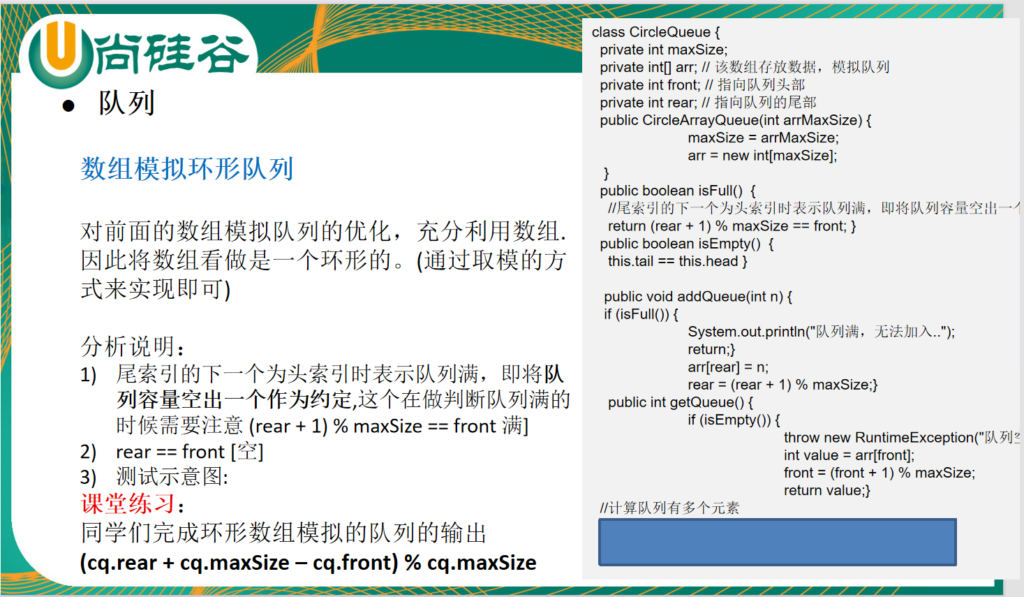
package com.zyy.queue;
import java.util.Scanner;
public class CircleArrayQueueDemo {
public static void main(String[] args) {
// 测试一把
System.out.println("测试数组模拟环形队列的案例~~~");
// 创建一个环形队列
CircleArray queue = new CircleArray(4);// 说明设置4,其队列的有效数据最大是3
char key = ' '; // 接收用户输入
Scanner scanner = new Scanner(System.in);
boolean loop = true;
// 输出一个菜单
while(loop){
System.out.println("s(show): 显示队列");
System.out.println("e(exit): 退出程序");
System.out.println("a(add): 添加数据到队列");
System.out.println("g(get): 从队列取出数据");
System.out.println("h(head): 查看队列头的数据");
key = scanner.next().charAt(0); // 接收一个字符
switch (key){
case 's' :
queue.showQueue();
break;
case 'a':
System.out.println("输出一个数");
int value = scanner.nextInt();
queue.addQueue(value);
break;
case 'g':// 取出数据
try{
int res = queue.getQueue();
System.out.printf("取出的数据是%d\n",res);
}catch(Exception e){
// TODO : handle exception
System.out.println(e.getMessage());
}
case 'h': // 查看队列头的数据
try{
int res = queue.headQueue();
System.out.printf("队列头的数据是%d\n",res);
}catch (Exception e){
//TODO : handle exception
System.out.println(e.getMessage());
}
break;
case 'e': // 退出
scanner.close();
loop = false;
break ;
default:
break;
}
}
System.out.println("程序退出~~");
}
}
class CircleArray {
private int maxSize ; // 表示数组的最大容量
// front 变量的含义做一个调整: front 就指向队列的第一个元素,也就是说 arr[front] 就是队列的第一个元素
// front 的初始值 = 0
private int front;
// rear 变量的含义做一个调整: rear 指向队列的最后一个元素的后一个位置,因为希望空出一个空间作为约定
// rear 的初始值 = 0
private int rear; // 队列尾
private int[] arr; // 该数组用于存放数据,模拟队列
public CircleArray(int arrMaxSize) {
maxSize = arrMaxSize;
arr = new int[maxSize];
}
// 判断队列是否满
public boolean isFull() {return (rear + 1) % maxSize == front; }
// 判断队列是否为空
public boolean isEmpty() {return rear == front; }
// 添加数据到队列
public void addQueue(int n) {
// 判断队列是否满
if (isFull()){
System.out.println("队列满,不能加入数据~");
return ;
}
// 直接将数据加入
arr[rear] = n;
// 将rear后移,这里必须考虑取模
rear = (rear + 1) % maxSize;
}
// 获取队列的数据,出队列
public int getQueue(){
// 判断队列是否空
if (isEmpty()){
// 通过抛出异常
throw new RuntimeException("队列空,不能取数据");
}
// 这里需要分析出 front 是指向队列的第一个元素
// 1. 先把 front 对应的值保留到一个临时变量
// 2. 将front 后移,考虑取模
// 3. 将临时保存的变量返回
int value = arr[front];
front = (front + 1) % maxSize;
return value;
}
// 显示队列的所有数据
public void showQueue(){
// 遍历
if (isEmpty()){
System.out.println("队列空的,没有数据~~");
return;
}
// 思路:从front开始遍历,遍历多少个元素
for(int i = front; i < front + size(); i++){
System.out.printf("arr[%d]=%d\n",i % maxSize, arr[i % maxSize]);
}
}
// 求出当前队列有效数据的个数
public int size(){
// rear = 2
// front = 1
// maxSize = 3
return (rear + maxSize - front) % maxSize;
}
// 显示队列的头数据,注意不是取出数据
public int headQueue(){
// 判断
if(isEmpty()){
throw new RuntimeException("队列空的,没有数据~~");
}
return arr[front];
}
}
